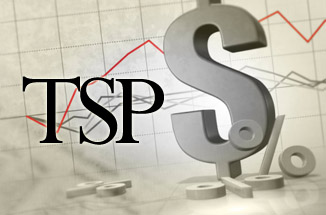
Exclusive $161,900 club gets new members
While the new higher pay cap of $161,900 is nothing to sneeze at, Senior Correspondent Mike Causey says it still lags behind what some receive in the private se...
Thanks to the 2017 pay raise, hundreds, maybe thousands of federal workers have moved into the exclusive club that pays $161,900 per annum. That represents a relatively small increase over the $160,300 they got last year. That’s the good news, especially for the new club members. But every silver lining has a cloud.
The not-so-good news for club members is that while the new higher pay cap of $161,900 is nothing to sneeze at, it is not, according to the government’s own data, nearly as much as they could make if they were doing the same or similar jobs in the private sector.
Some think tanks, newspaper editorial boards and many people who don’t work for the government take issue with the pay “gap.” If anything, they say, the government is a much better deal financially when the total package (pay, holidays, vacation time and retirement benefits) is considered. But in the pay department, many federal workers well down in the grade 15 pay ladder are all making the same salary although many of the more senior employees have tougher or more important assignments.
In the metro Washington-Baltimore area, workers in steps 8, 9 and 10 of the GS-15 scale will now all make the same salary: $161,900.
In the Houston locality pay area, the new $161,900 top salary now extends down to step 7 of the GS-15 grade. Thanks to locality pay, feds in Houston make more money than workers doing the same jobs in Washington-Baltimore; Austin, Texas; and major federal centers like Huntsville-Decatur-Albertville, Alabama, and Ogden, Utah. Or in most other cities.
The new pay cap now takes in all workers at steps 8, 9 and 10 in Los Angeles-Long Beach, and in the metro New York City locality area, which includes parts of New Jersey, Connecticut and Pennsylvania. The new pay cap now covers workers in GS-15 steps 8, 9 and 10 in the Chicago locality pay area, which includes some feds in Wisconsin and Indiana.
In the Philadelphia locality pay area, which includes Reading, Camden and portions of New Jersey, Delaware and Maryland, the new pay cap takes in all workers in steps 9 and 10 of the GS-15 scale.
Many cities with their own locality pay zone or those part of the catchall RUS (for rest-of-U.S.) pay zone don’t have anyone at or even near the pay cap. Austin, for instance, now has a new top salary of $156,300 for GS-15, step 10. That’s about $5,000 per year less than in places like San Francisco-Oakland, where the new pay cap of $161,900 covers all workers in GS-15 steps 5 through 10.
Your pay: compared to what? Interested in knowing how much you’d earn if you could move your job to another city or locality pay zone? To see how the other half lives, click here.
Nearly Useless Factoid
While an ice-cream dessert encased in pastry had been around for awhile, Delmonico’s Restaurant in New York City originated the name “Baked Alaska” in 1876 as a way to honor the newly acquired U.S. territory.
Source: Food Resource
Copyright © 2024 Federal News Network. All rights reserved. This website is not intended for users located within the European Economic Area.
Mike Causey is senior correspondent for Federal News Network and writes his daily Federal Report column on federal employees’ pay, benefits and retirement.
Follow @mcauseyWFED





